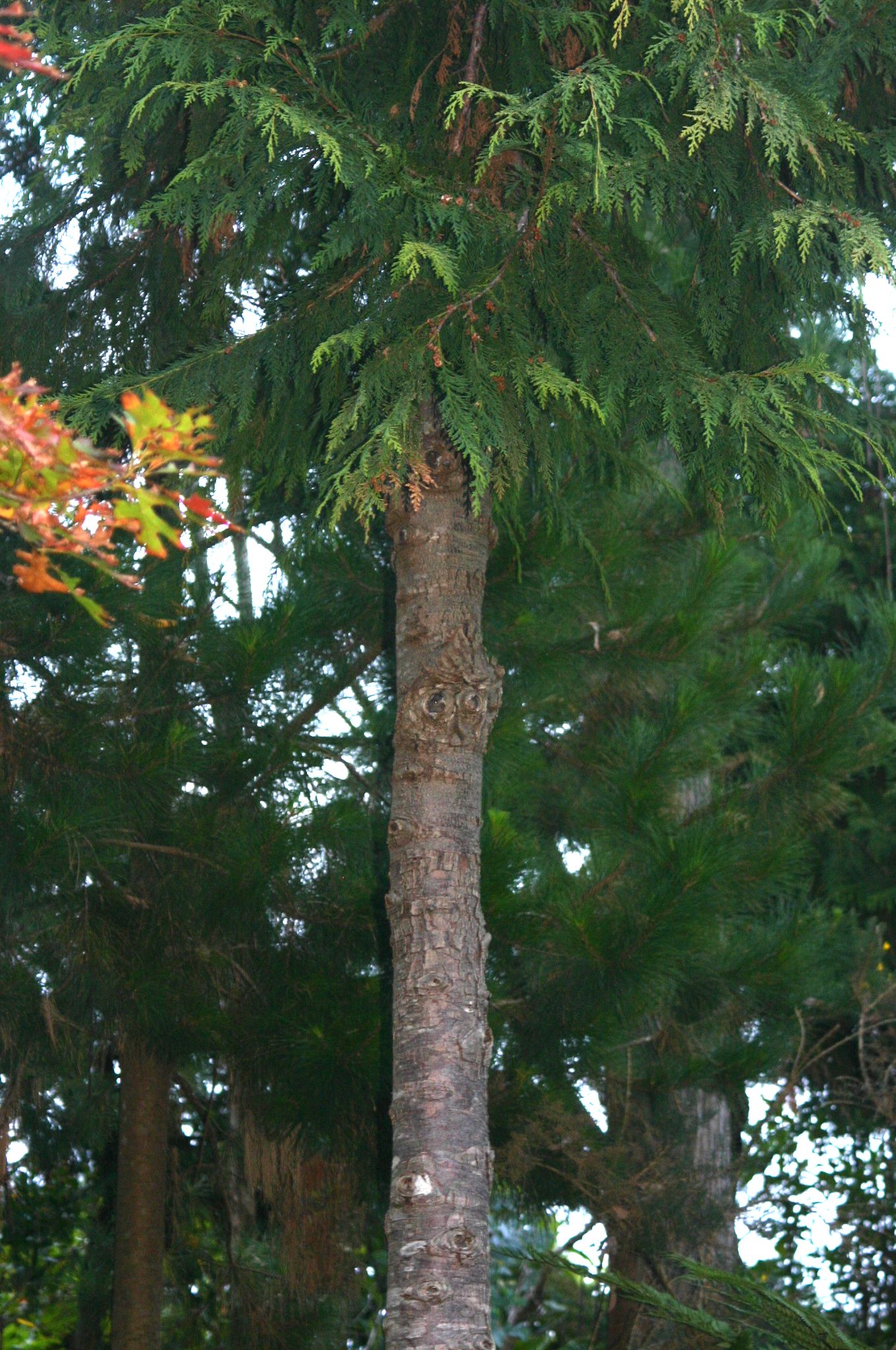Dial-a-Tree Virtual Tree Nursery
Tree Stuff Blog
Lawson Cypress – an old favourite for cold sites, by Ben Gaia
www.dialatree.co.nz
No, it's not just me, but lots of old farmers and tree-growing maniacs in the rugged hills of Aotearoa love to come across the droopy, ferny foliage of an old Lawson Cypress. Sawmillers are almost as keen to find big old pruned butt logs of Lawson as they are to get hold of big Matai logs. John Mortimer, in "A Selection of Alternative Timbers", tells us that the heartwood is "quite outstanding", durable for at least 200 years even lying in the forest, and harder than Kauri. When the Forest Service milled it up until the '90s there was a steady demand for power-pole crossbars in Taiwan, and it is well respected in Japan for building, so there is a proven export market in Asia.

So why aren't we still planting it? Lots of old shelterbelts from the 1930s are still providing good sawn timber, but most were never pruned (or fed) so the quality is not the best clearwood. All timber trees do better when regularly pruned and fertilised, even if only with the manure from the deer paddock next to them. Also there has never been a proper selection of the best types done. There are over 200 varieties, some weird and wonderful droopy blue things - and often it is poorly grown in harsh conditions - and so it gets canker and buttresses. This has damaged its reputation with fussy Farm Foresters who opt for the healthier and more reliable looking Leyland and Lusitanica Cypresses instead.
But Port Orford Cedar, as Lawson is called in its home the USA, is a superior and strong timber, very "blond" coloured, with a straight tight grain, and above all a lovely scent. This refreshing smell not only fills the steam of Lawson-clad saunas, but is insect resistant and so was used traditionally for clothes drawers and wardrobes, and means it doesn't need to be poisoned. A major point scorer in my plan to rid NZ of soggy, borer-prone Pinus radiata. I clad a new house extension with heart Lawson, painted with timber stain, and where the borer and huhus are peppering the 20 year old rimu weatherboards from the same era, the Lawson looks as golden and clear as the day it was nailed up.

So if you can find the young trees, plant them in good ground, not on rock or riverbed. They handle frost and snow even above 600m in the South Island but mostly they like a bit of rain, so avoid drought areas in the East. Feed them with ample manure and trace elements throughout their life and snip out the double leaders and big side branches. Within 40 years you will start to get a decent bit of heartwood and after 60 years, comparable with good Oak or Totara, you will have a millable product for grandchildren and builders to dream about. You will not find many available, but they are well worth adding to your cypress stand, perhaps as a shelterbelt on the cold end. And their thick drooping branches have often saved sheep and young lambs from snowdrifts in the high country spring blizzards.
www.dialatree.co.nz
Back to dialatree www.dialatree.co.nz

